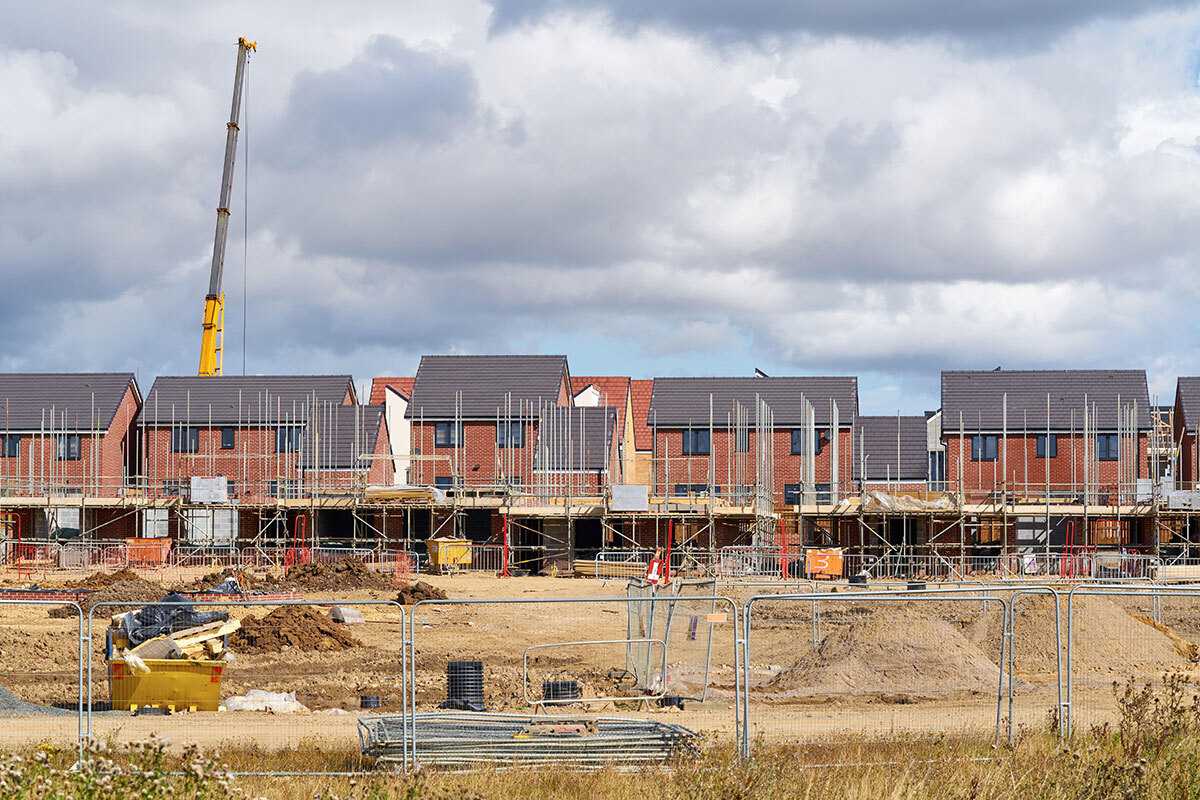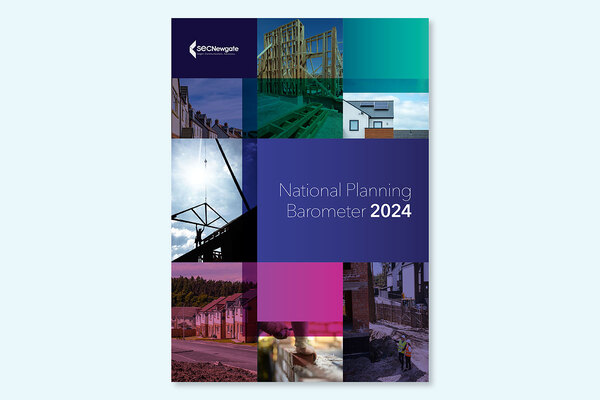You are viewing 1 of your 1 free articles
Planning reforms would render 300,000 homes target ‘impossible’, say MPs
Planning reforms proposed by the government would make its 300,000 new homes per year target “impossible”, a cross-party group of MPs has found.

In a new report on proposed planning reforms, the Levelling Up, Housing and Communities (LUHC) Committee said planning consultants estimate that annual housebuilding will go down to around 150,000 a year under the government’s proposed policy reforms.
The committee is calling on government to take “urgent action” to increase housebuilding.
The report also called on the government to give greater importance in planning for social rent homes and for the 300,000-home objective to include a target for 90,000 social rent homes per year.
In 2017, then-Conservative chancellor Philip Hammond announced the government’s aim to build 300,000 homes per year.
Although the target was scrapped during Liz Truss’ brief time as prime minister last year, housing secretary Michael Gove reaffirmed the government’s commitment to the plan in October.
As part of its planning reforms, the government announced proposals in December to move to advisory rather than mandatory housing targets for local plans.
The proposals also include removing the need for local authorities to continually demonstrate a deliverable five-year housing land supply.
The LUHC Committee’s report said: “We have heard evidence from many stakeholders that these measures will render the national housing target impossible to achieve.
“While the government’s objective to ensure more local authorities have up-to-date local plans is laudable, the government has not provided sufficient evidence to demonstrate how its proposed reforms will increase housebuilding to meet the national housing target by the mid-2020s.”
The committee said national planning policy has been characterised by “stop-start reform” over several years.
“This has regrettably resulted in uncertainty among local authorities and across the planning sector.
“Contrary to the government’s objective of facilitating planmaking, the short-term effect of its announcement of proposed planning reforms (in December 2022) has been to halt the progress of local plans in a number of local authority areas.
“The government must see the merit in pausing plans for further reform, in order to allow for a period of stability in which reforms already introduced can be properly implemented, and any lessons from that implementation learned,” according to the report.
Even without the reforms, the committee said that while the government is on track to deliver one million new homes over the course of this parliament, it is not forecast to deliver 300,000 net new homes per year by the mid-2020s.
Clive Betts, chair of the LUHC Committee, said: “We have a national shortage of housing in England and there’s evidence the government’s latest shake-up of planning rules is already having a damaging impact on efforts to increase the building of new homes.
“People are facing rising housing costs. Housing affordability is a major issue. For our economy and for communities across the country, it’s crucial the government takes urgent action to encourage the building of more homes.
“Without urgent action, the government will fail to achieve its national housing target of building 300,000 net new homes per year by the mid-2020s.”
Mr Betts added that the prospect of a “major hit” to the building of new homes resulting from the government’s planning rule changes is “deeply concerning, especially for people wanting to get on the housing ladder, families eager to move home and communities crying out for affordable places to live”.
The report also highlighted pressures on councils’ planning departments.
Darren Rodwell, housing spokesperson for the Local Government Association (LGA), said: “Councils are committed to working with government and developers to build the housing the country needs, with land for more than 2.6 million homes allocated in local plans and nine in 10 planning applications being approved.
“As this report highlights, local council planning departments face significant challenges in recruitment and retention, and we need a comprehensive planning skills strategy to address this, which should be urgently brought forward.”
He also said the LGA has significant concerns that the proposed Infrastructure Levy will result in “fewer, not more, affordable homes delivered”, will expose councils to “excessive levels of financial risks” and be “increasingly burdensome and complex for local authorities to implement and manage”.
Mr Rodwell added: “National, top-down algorithms and formulas can never be a substitute for local knowledge and decision-making by those who know their areas best.
“We have been clear that councils and communities are best placed to decide how to build the right homes in the right places in their local areas, with the right infrastructure.”
A Department for Levelling Up, Housing and Communities (DLUHC) spokesperson said: “We remain committed to our ambition of delivering 300,000 homes per year and to retaining a clear starting point for calculating local housing needs.
“We know the best way to deliver more homes is having more up-to-date local plans in place, which is why we have recently consulted on changes to planning policy.
“Local planning authorities are best placed to identify sites where homes can be delivered to meet local needs, and we expect them to make sufficient provision for housing.”
Sign up for our daily newsletter
Already have an account? Click here to manage your newsletters










